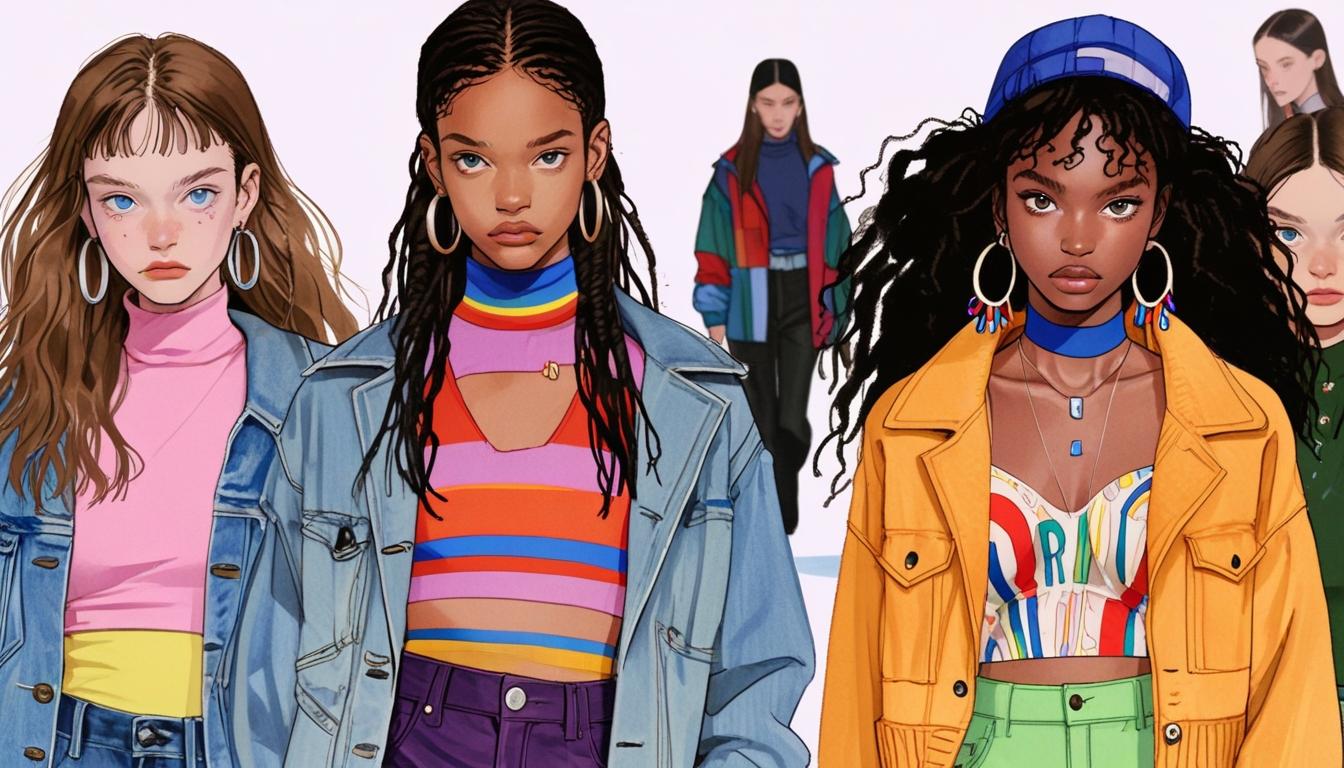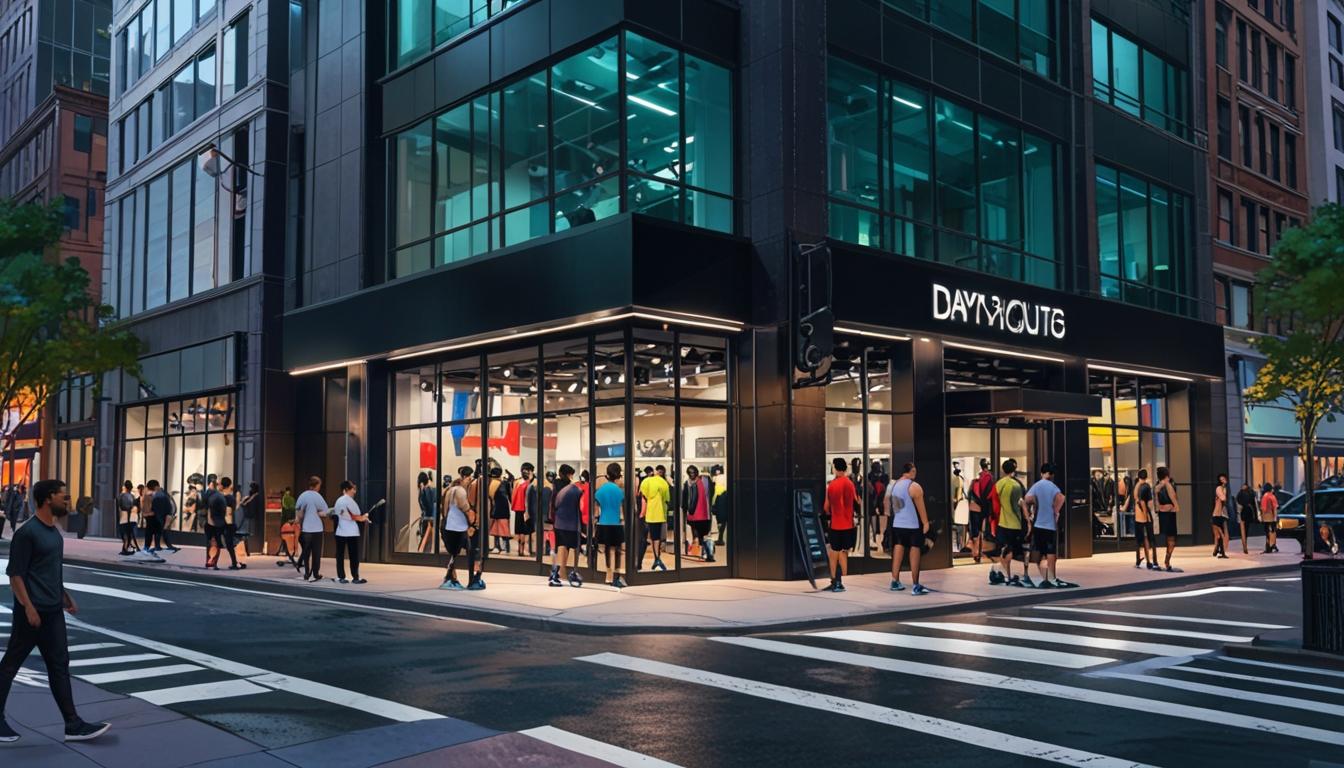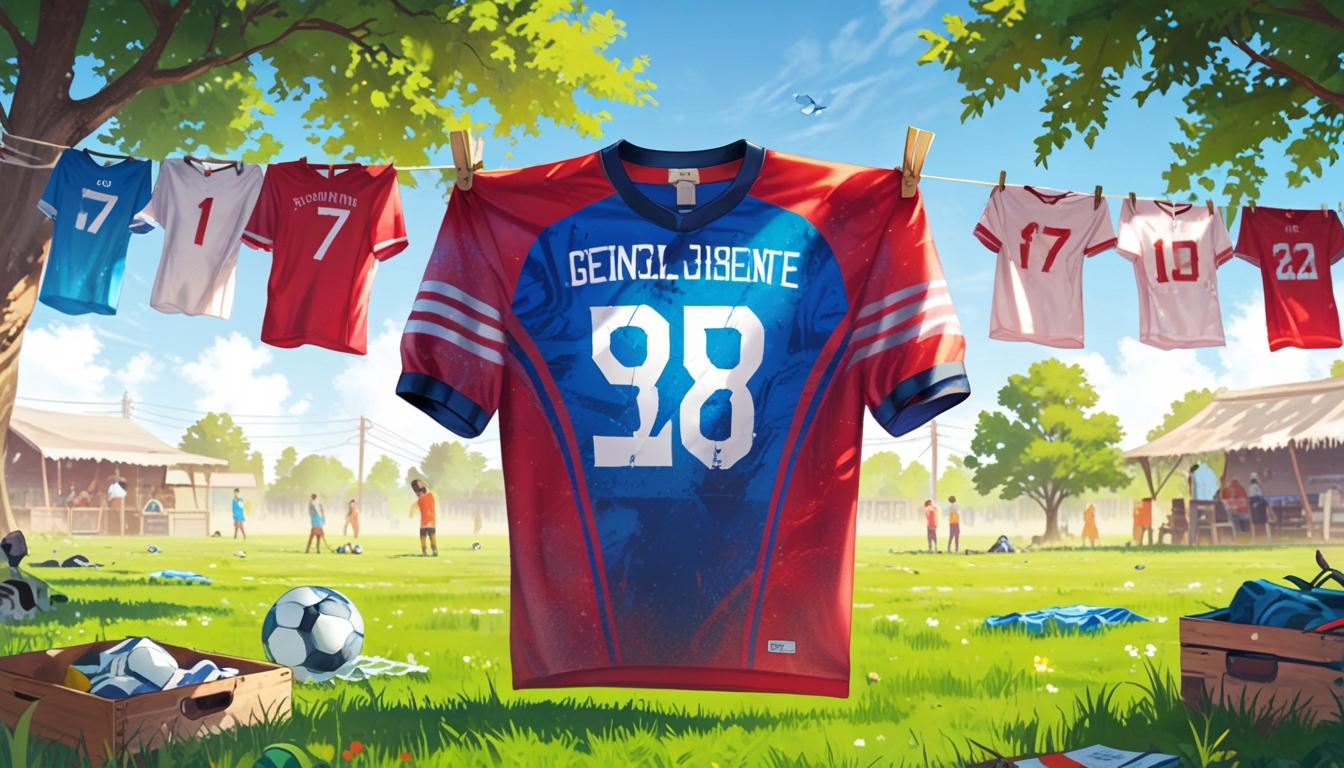The 2023 awards season marks a significant resurgence for Gap, with celebrity endorsements and strategic marketing shifts driving renewed interest in the iconic American brand.
The awards season of 2023 marked a significant comeback for the iconic American brand Gap, a high-street label that has seen a resurgence in popularity, largely attributed to a new leadership team and strategic shifts in its marketing approach. Notable celebrities including Timothée Chalamet, Demi Moore, Cynthia Erivo, and Anne Hathaway have donned Gap pieces at recent red carpet events, signaling a shift in the brand’s trajectory. Additionally, Gap Inc. reported a 7% increase in sales for the last financial quarter, reflecting this renewed interest among consumers.
Joy Montgomery, the commerce editor at Vogue, highlighted a pivotal moment for Gap when Anne Hathaway showcased a luxe version of a white shirt dress at a Bulgari event last year. Montgomery noted this event as a turning point that prompted the fashion community to pay attention, expressing that it marked “a moment that the fashion world sat up and realised that something was changing.”
Founded in San Francisco in 1969, Gap is part of Gap Inc., which also includes brands such as Banana Republic and Old Navy. For decades, Gap was synonymous with 90s preppy style, characterized by its jeans and logo sweatshirts. However, the brand faced challenges in recent years, including the closure of its stores in the UK and Ireland in 2021 and a high-profile collaboration with Kanye West that ended in 2022 due to the rapper’s controversial statements.
The leadership of Richard Dickson, who took the role of CEO in 2023 after a successful stint at Mattel, has been crucial to the brand’s revival. Dickson brought in renowned New York fashion designer Zac Posen as creative director, who has previously gained acclaim for his work with Hollywood celebrities. Under Dickson’s direction, Gap is attempting to revive and modernize the aesthetic of the 90s and early 2000s while adapting it for contemporary consumers.
Gap’s latest spring 2025 campaign features a blend of nostalgia and modernity, spotlighting actress Parker Posey, who emerged as a star in the 90s and is experiencing a resurgence thanks to her role in the acclaimed television series “The White Lotus.” This advertising strategy is complemented by high-production videos featuring contemporary musicians, aiming to appeal to a younger, Gen Z audience. Brittaney Kiefer, creative editor of Ad Weekly, commented on Gap’s advertising strategy, reminiscing about its past campaigns featuring notable figures. She noted that the brand is leveraging “energetic, confident entertainment” in its fresh advertising approach.
Retail consultant Catherine Shuttleworth emphasized that Gap is tapping into a positive sentiment among millennial shoppers who have nostalgic reflections of their childhood experiences with the brand. She stated that many younger consumers recall wearing Gap as kids and are therefore more likely to resonate with its current offerings.
However, there is an acknowledgment that celebrity endorsements alone have limitations in influencing consumer behavior. Montgomery pointed out that brand engagement may hinge more on social media influencers and peer recommendations on platforms like TikTok. The younger demographic’s connection to vintage Gap items has been confirmed by a report from secondhand platform Depop, which revealed an 81% increase in searches for vintage Gap clothing since the prior June.
In response to this growing interest in vintage styles, Gap has introduced its own GapVintage collection, allowing customers to access past stock. As the brand navigates its revival, there is speculation about the potential reestablishment of physical retail locations. Currently, Gap’s presence in the UK is limited to in-store spaces within other retail environments. Research indicates that 47% of consumers aged 18 to 24 express an intention to frequent high-street shopping more frequently in the coming years.
Despite the nostalgia-driven strategy, some critics caution against relying solely on past branding tropes for future sales. Fashion writer Lauren Sherman, in Puck magazine, conveyed skepticism about whether Gap can sustain its rejuvenation. Addressing the importance of quality, Gap’s CEO emphasized the need to create enduring fashions that resonate with current trends while maintaining an essence of timelessness.
Montgomery further advised that for Gap to sustain its renaissance, it might consider looking towards newer ideals set by brands like Uniqlo, which excels in offering quality basics. She noted the importance of a focused approach in delivering products that meet consumer expectations.
As Gap repositions itself for future success, it is not the only vintage label attempting a comeback; Topshop recently announced its own relaunch. The current fashion landscape hints at a nostalgia-driven revival reminiscent of the 1990s.
Source: Noah Wire Services




